Introduction to Texas
Why Texas Should Be on Your Bucket List
Texas is not just another state—it’s a whole world in itself. With its massive size, Texas offers a bit of everything: deserts, mountains, beaches, forests, and cities bursting with culture and life. Whether you’re a foodie, an adventurer, a music lover, or a history buff, Texas has something just for you.
Imagine walking the streets of Austin, guitar music in the air, or gazing up at the stars in Big Bend National Park with nothing but the desert silence around you. Or how about floating down the Guadalupe River in a tube, margarita in hand? The diversity here is unmatched. Texas proudly blends Southern hospitality with a proud frontier spirit—and it shows in everything from its food to its festivals.
One of the best parts? You can enjoy both urban sophistication and raw natural beauty all in a single trip. Texas has been shaped by many cultures—Mexican, German, Czech, African American, and Native American to name a few—making it a vibrant melting pot. This cultural fusion shines through in its music, art, and especially food.
In short, if you’re looking for a travel destination that offers variety, personality, and unforgettable experiences, Texas should be right at the top of your list.
Quick Facts About Texas
To really appreciate Texas, let’s get familiar with some quick facts:
- Nickname: The Lone Star State
- Capital: Austin
- Largest City: Houston
- Population: Over 29 million
- Size: Second-largest U.S. state (only Alaska is bigger)
- Borders: Shares a 1,254-mile border with Mexico
- Climate: Varies dramatically—humid in the east, dry in the west
- Official Motto: “Friendship” (yes, really!)
Texas boasts three of the ten largest cities in the U.S. and is known for its strong sense of independence and pride. The state’s economy is also no joke—it’s a powerhouse in energy, agriculture, tech, and more. And yes, everything is indeed bigger in Texas—from portions at restaurants to the heart of the people.
Best Time to Visit Texas
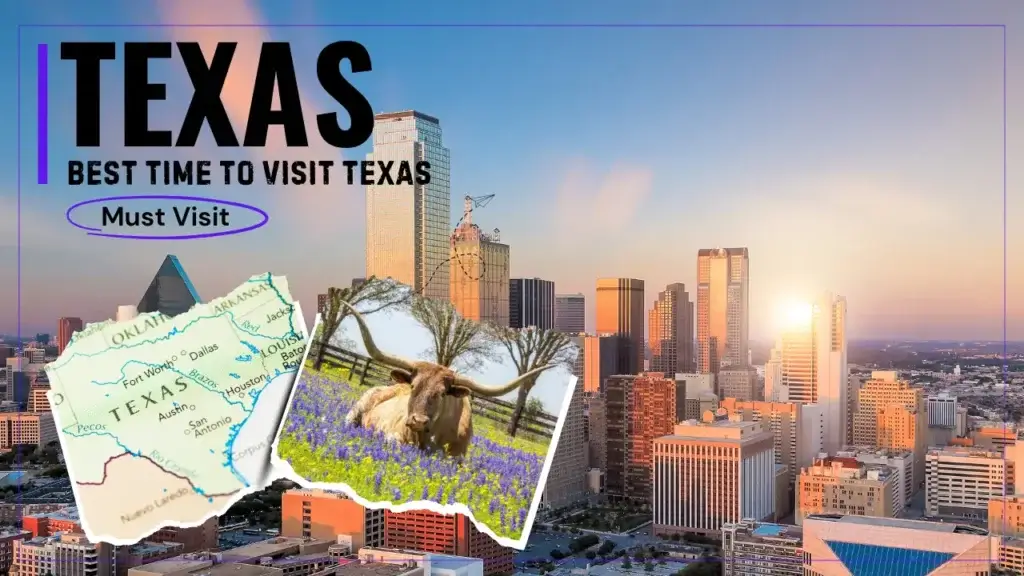
Weather Overview by Season
Texas is so large that weather patterns vary dramatically depending on where you go. But here’s a general seasonal breakdown to help you plan your trip:
- Spring (March to May): Probably the best time to visit. Temperatures are warm but not sweltering, and bluebonnets bloom across the countryside. Expect highs in the 70s to 80s °F (20–30°C).
- Summer (June to August): Be ready for serious heat. Highs often reach 90s and 100s °F (32–38°C). West Texas is drier, while cities like Houston and Dallas can be humid. That said, it’s also festival season.
- Fall (September to November): Another excellent window for travel. Cooler temps and vibrant fall foliage in East Texas make for a scenic trip. Plus, college football is in full swing.
- Winter (December to February): Generally mild, especially in South Texas. Snow is rare but can occur in the Panhandle or Dallas. Houston and San Antonio stay relatively warm.
Tip: Always check the local forecast, especially if you’re heading to the coast (hello hurricanes) or the desert (flash floods are a thing).
Festivals and Events Worth Planning Around
Planning your Texas trip around a big event can make it even more unforgettable. Here are a few major ones to watch for:
- South by Southwest (SXSW) – Austin (March): A massive music, film, and tech festival that takes over the city.
- Houston Livestock Show and Rodeo (March): One of the biggest rodeos in the world, complete with concerts and deep-fried everything.
- Texas State Fair – Dallas (September to October): Iconic food, giant rides, and Big Tex—this fair is pure Americana.
- Fiesta San Antonio (April): A 10-day celebration of the city’s rich history with parades, food, and parties galore.
- Austin City Limits Music Festival (October): Features world-class artists and incredible vibes in Zilker Park.
No matter when you visit, there’s bound to be something happening. Just book ahead if you’re traveling during major events—Texas knows how to throw a party, and rooms can fill up fast.
Top Cities to Visit in Texas
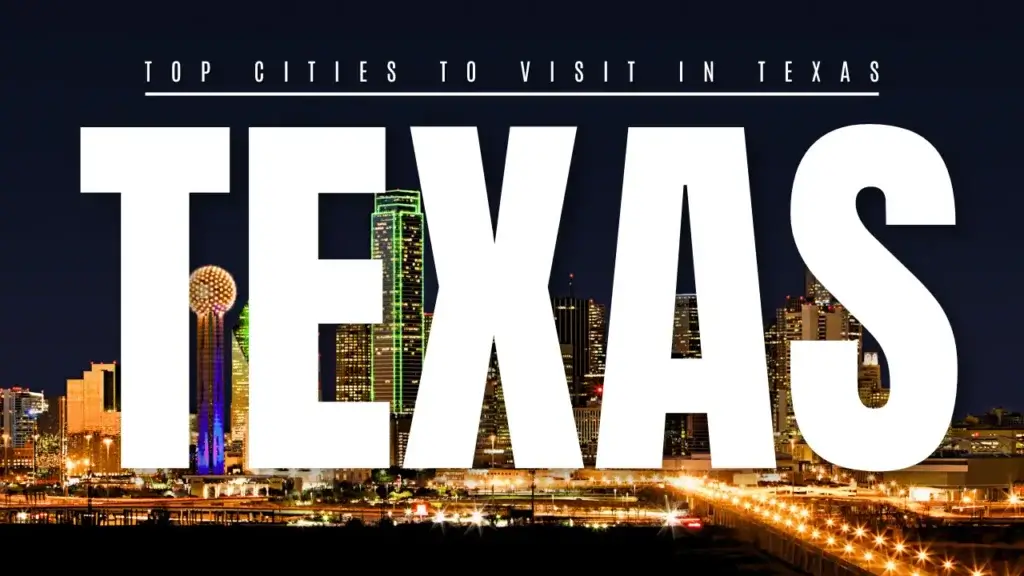
Austin – The Live Music Capital
Austin isn’t just Texas’ capital—it’s its creative soul. Famous for its live music, quirky vibe, and food trucks galore, Austin feels like a city that marches to its own beat. You’ll find live music in the airport, on street corners, and in every imaginable bar.
Start your visit on 6th Street, known for its high-energy nightlife and eclectic mix of bars. Check out Zilker Park, a massive green space perfect for kayaking on Lady Bird Lake or enjoying a festival like ACL. For a true Austin experience, catch the Congress Avenue Bridge bat colony take flight at dusk—yes, it’s a thing.
Foodies will fall in love with Austin’s eats—from legendary BBQ at Franklin Barbecue to vegan tacos at The Vegan Nom. Coffee shops double as coworking havens, and there’s a startup energy that keeps the city buzzing.
But there’s also nature—hill country hiking trails, Barton Springs Pool, and scenic overlooks like Mount Bonnell offer peaceful escapes. Whether you’re into tech, tunes, or tacos, Austin has a vibe that hooks you instantly.
San Antonio – Home of The Alamo
San Antonio blends rich colonial heritage with vibrant modern culture, making it one of the most charming cities in Texas. At the heart of it all lies The Alamo, a UNESCO World Heritage Site and symbol of Texas independence. A visit here isn’t just about snapping a selfie—it’s about walking in the footsteps of history.
But there’s more to San Antonio than its iconic mission. The River Walk is a highlight—this winding network of paths, restaurants, and shops along the San Antonio River offers scenic strolls and romantic boat rides. It’s especially magical at night, with lights reflecting off the water and live mariachi music filling the air.
History lovers can explore San Antonio Missions National Historical Park, which includes four other Spanish missions aside from the Alamo. Meanwhile, families will enjoy the San Antonio Zoo, SeaWorld, or Six Flags Fiesta Texas.
Food is another big draw. From Tex-Mex staples like puffy tacos to high-end restaurants downtown, there’s no shortage of flavor. And don’t miss the city’s Fiesta celebration in April—a colorful explosion of parades, food, and culture.
Houston – A Taste of Space and Culture
Houston is Texas’ largest city and a true cultural heavyweight. It’s home to NASA’s Johnson Space Center, where visitors can touch moon rocks and explore mission control—the real one. It’s an absolute must for any space or science enthusiast.
But Houston is more than just rockets. It boasts a world-class Museum District with 19 institutions including the Museum of Fine Arts, Children’s Museum, and Houston Museum of Natural Science. Art lovers should also check out The Menil Collection and quirky street murals in EaDo (East Downtown).
This city is also one of the most diverse in the United States, which shows in its cuisine. Whether it’s Vietnamese pho, Nigerian jollof rice, or Texan steak, Houston serves it all. In fact, it’s often called the food capital of the South for good reason.
Outdoor enthusiasts will love Buffalo Bayou Park, where you can rent a kayak or bike the trails. For sports fans, the city is home to major league teams in football (Texans), baseball (Astros), and basketball (Rockets).
And let’s not forget shopping—The Galleria is Texas’ largest mall and a retail paradise.
Dallas – A Blend of History and Modernity
Dallas offers a sophisticated mix of business buzz, historic charm, and modern luxury. It’s perhaps most famously known for the JFK assassination site—the Sixth Floor Museum at Dealey Plaza gives a compelling look at that tragic day in American history.
Beyond its historical significance, Dallas is a booming metropolitan hub. The Dallas Arts District is the largest urban arts district in the U.S., featuring the Dallas Museum of Art, Nasher Sculpture Center, and Winspear Opera House. Whether you’re into fine art or live theater, Dallas has something to offer.
Sports culture thrives here, too. Catch a Cowboys game at AT\&T Stadium (technically in nearby Arlington) or cheer on the Dallas Mavericks or Dallas Stars at the American Airlines Center.
Food is a serious business in Dallas. From high-end steakhouses to hole-in-the-wall BBQ joints and late-night taco trucks, the city satisfies every craving. If you’re a fan of Southern comfort food, Dallas delivers with flair.
Want to shop? Visit NorthPark Center or explore the upscale Highland Park Village. And if you’re looking for family fun, don’t miss the Perot Museum of Nature and Science or the Dallas World Aquarium.
Natural Attractions and Outdoor Adventures
Big Bend National Park
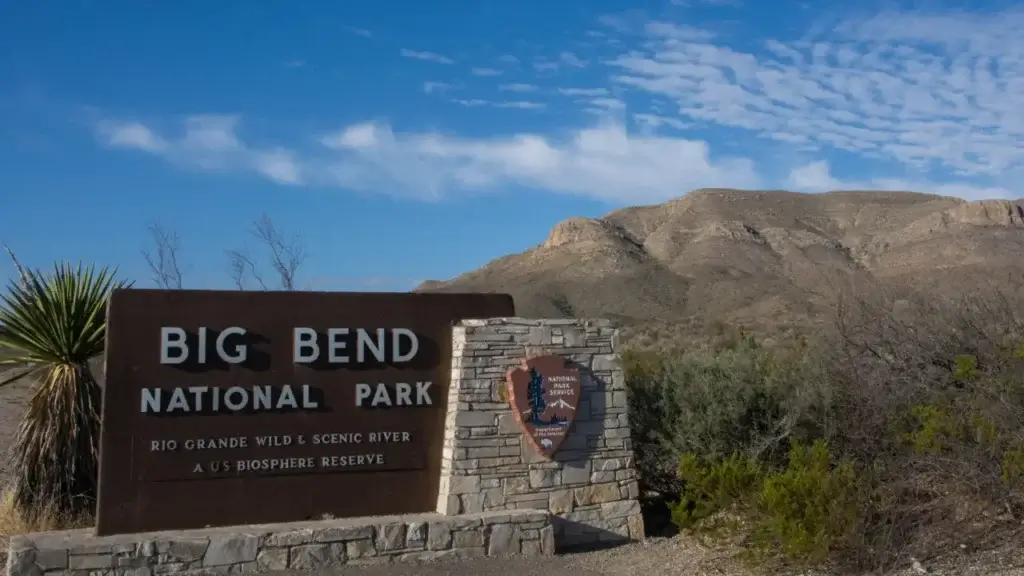
Big Bend is where nature humbles you. Tucked in the far west of Texas along the Rio Grande, this remote national park offers jaw-dropping scenery, rugged mountains, desert landscapes, and star-filled skies that seem infinite.
The park is massive—over 800,000 acres of wild terrain—perfect for hiking, camping, and exploring. Popular trails include the Lost Mine Trail, Window Trail, and the dramatic Santa Elena Canyon hike. Want to really get away from it all? Go backcountry camping or explore the Chisos Mountains for a cooler, alpine escape.
What makes Big Bend truly unique is the variety: you’ve got desert in the Chihuahuan, river ecosystems along the Rio Grande, and mountain ranges with pine forests. Birdwatchers will be in heaven—more than 450 species live here.
Stargazing here is epic. Big Bend is a certified International Dark Sky Park, and on a clear night, the Milky Way looks close enough to touch.
Because of its remote location, planning is crucial. Fuel up before you enter, bring lots of water, and be ready for limited cell service. But the solitude, silence, and beauty? Totally worth it.
Palo Duro Canyon – The Grand Canyon of Texas
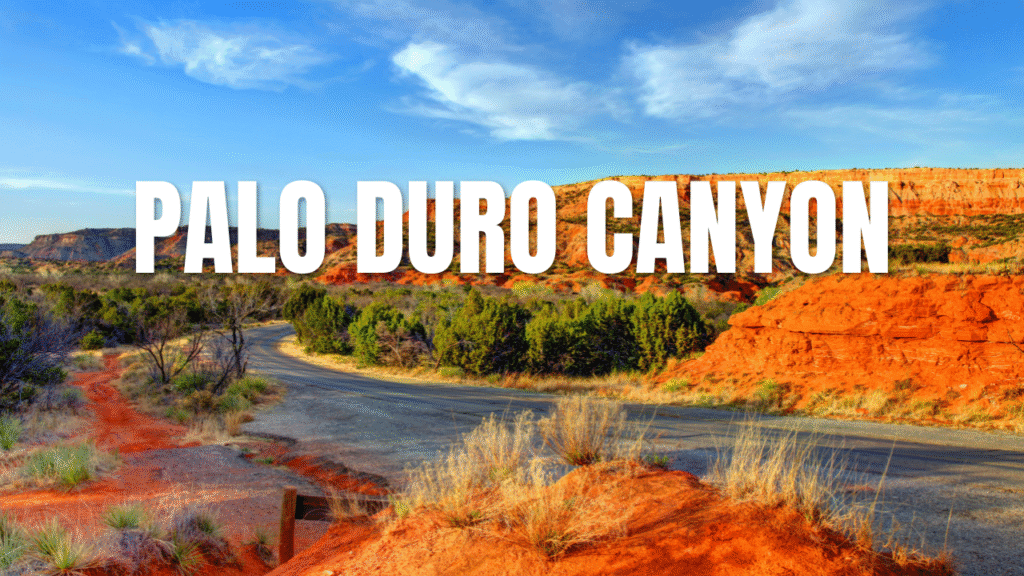
If you can’t make it to Arizona’s Grand Canyon, Palo Duro Canyon offers a stunning alternative right in Texas. Located near Amarillo in the Texas Panhandle, this is the second-largest canyon in the U.S.—and a truly underrated gem.
This 120-mile-long, 20-mile-wide canyon is a paradise for hikers, bikers, and photographers. The most famous trail is the Lighthouse Trail, leading to a rock formation that looks like a towering spire—don’t forget your camera.
What sets Palo Duro apart is its accessibility. You can actually drive down into the canyon and camp at the base. RV parks, cabins, and tent sites are available, making it easy to turn a day trip into a full-blown adventure.
During the summer, the park hosts TEXAS Outdoor Musical, an epic show performed in an amphitheater under the stars. It tells the story of Texas settlers and is packed with singing, dancing, and even fireworks.
Whether you’re camping, glamping, or just road-tripping, Palo Duro is a must-see for nature lovers.
Gulf Coast Beaches

Think Texas doesn’t have beaches? Think again. The state’s 367 miles of coastline along the Gulf of Mexico offers sandy shores, seafood shacks, and a totally different side of the Lone Star State.
South Padre Island is the crown jewel for beachgoers. Famous for spring break madness, it also has quieter stretches perfect for family vacations, kiteboarding, and dolphin tours.
Galveston is another popular coastal destination. Beyond the beaches, it boasts a historic downtown, Victorian architecture, and amusement parks like the Galveston Island Historic Pleasure Pier.
Port Aransas and Rockport are favorites for fishing, kayaking, and wildlife watching. You might even spot sea turtles or whooping cranes, depending on the season.
Pro tip: The water isn’t Caribbean-clear, but the warm gulf breeze, beachside tacos, and laid-back vibe more than make up for it. And yes, you can surf—especially during hurricane season.
Hidden Gems in Texas
Marfa – The Art in the Desert

Marfa is one of those rare places that feels like a mirage—a tiny desert town that’s somehow become an international hub for contemporary art, minimalism, and mystery. Tucked away in far West Texas, Marfa combines stark desert beauty with high-end galleries, eclectic shops, and a quiet, almost surreal vibe.
The town’s transformation began when artist Donald Judd moved here in the 1970s and turned old army barracks into art installations. Today, you can visit the Chinati Foundation, where massive sculptures stretch across the desert landscape. It’s minimalist art on a maximalist scale.
Beyond the art, Marfa is a place of curiosities. Ever heard of the Marfa Lights? These mysterious glowing orbs appear in the desert at night, and no one really knows why. There’s even a designated viewing area just outside town.
Marfa also boasts boutique hotels like El Cosmico, where you can stay in a renovated vintage trailer or yurt under a sky full of stars. And the food scene? Surprisingly upscale, with farm-to-table restaurants, craft cocktails, and gourmet coffee shops.
Marfa might be remote, but that’s part of its allure. It feels like stepping into another dimension—where time slows down, creativity thrives, and the desert speaks.
Gruene Historic District

Pronounced “green,” the Gruene Historic District is a charming slice of old Texas nestled within New Braunfels. It’s known for its beautifully preserved 19th-century buildings, riverfront scenery, and the oldest dance hall in Texas—Gruene Hall.
Gruene Hall is the heart of the town. This rustic, wooden venue has hosted legendary acts like Willie Nelson and George Strait, and still hosts live music almost every night. If you’re into honky-tonk and two-stepping, this place is magic.
The Guadalupe River flows nearby, making Gruene a hot spot for tubing, kayaking, and paddleboarding during warmer months. You’ll also find antique stores, local boutiques, and cozy restaurants lining the historic streets.
Unlike the hustle of bigger cities, Gruene is all about slowing down. It’s perfect for a weekend getaway, romantic retreat, or a relaxing break during a road trip through Hill Country.
Enchanted Rock State Natural Area
Located near Fredericksburg, Enchanted Rock is a massive pink granite dome that rises dramatically from the Hill Country. Native legends say it’s haunted or magical—and once you stand atop it, you might agree.
Hiking the summit trail is a must. It’s short but steep, and the 360-degree views at the top are nothing short of stunning. On clear nights, the stargazing is incredible—Enchanted Rock is a designated Dark Sky Park.
Besides hiking, the park offers rock climbing, camping, and birdwatching. Wildflowers bloom in spring, and the area is alive with vibrant plant life and wildlife. It’s peaceful, quiet, and filled with a sense of ancient wonder.
Just a short drive from Fredericksburg’s wineries and German-inspired downtown, Enchanted Rock makes for the perfect nature-culture combo. Come for the views, stay for the vibe.
Texas Road Trip Ideas
Classic Hill Country Route
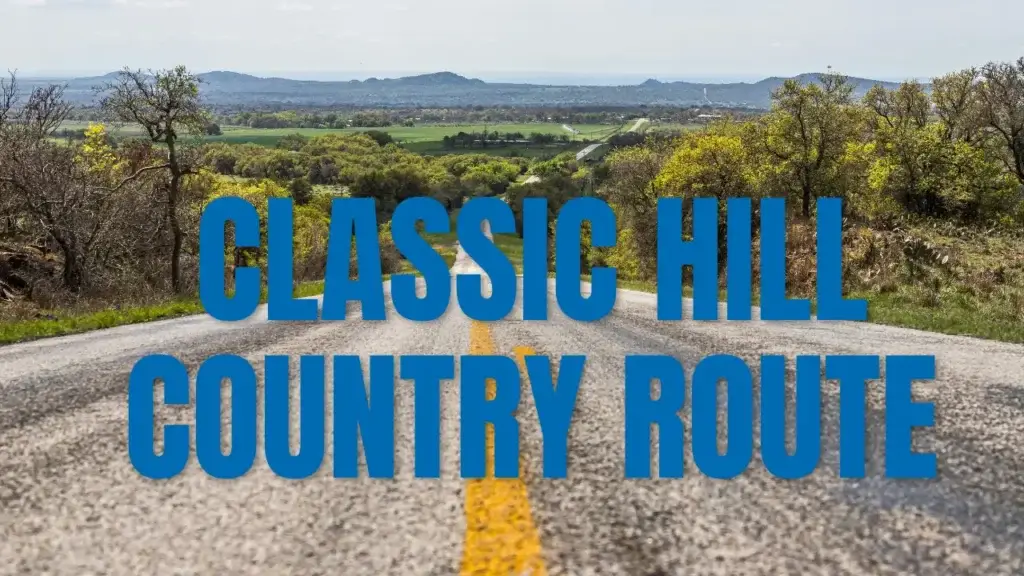
Texas Hill Country is one of the most scenic and culturally rich areas of the state. It’s dotted with charming small towns, rolling vineyards, bluebonnet fields, and winding rivers. A road trip here is all about slow travel, beautiful views, and local charm.
Start in Austin, then head to Dripping Springs for some wine tasting and brewery hopping. Next stop? Johnson City, home of President Lyndon B. Johnson’s ranch. Then cruise to Fredericksburg, where German heritage meets Texan flair—think schnitzel with a side of BBQ.
From there, continue to Luckenbach, a tiny town with a big reputation for country music, and then swing through Wimberley, known for its art scene and swimming holes like Jacob’s Well and Blue Hole.
Every town offers something unique—antique stores, live music, local distilleries, and some of the friendliest folks you’ll ever meet. Spring is especially magical, with fields of wildflowers carpeting the landscape.
You could do this in a weekend, but a full week gives you time to really savor the experience.
West Texas Desert Trail
If you’re up for a more adventurous road trip, the West Texas Desert Trail delivers jaw-dropping landscapes and off-the-grid vibes. This route takes you from El Paso to Big Bend National Park, with stops in Marfa, Alpine, and Fort Davis.
Start in El Paso, where you can explore the vibrant border culture and take a hike in Franklin Mountains State Park. Then head southeast to Marfa—the desert art mecca—and grab a photo at the faux Prada Marfa installation on the highway.
Next, cruise into Alpine for small-town charm, or explore the Davis Mountains State Park and McDonald Observatory for epic stargazing.
Finally, finish strong in Big Bend, where the Rio Grande carves through canyon walls and wild desert stretches as far as the eye can see. You’ll feel like you’ve left civilization—and that’s kind of the point.
Coastal Cruising Itinerary
Craving some sea breeze with your Texas road trip? Head for the coast! This scenic itinerary takes you along the Gulf of Mexico, starting in Galveston and ending in South Padre Island.
Begin in Galveston with its Victorian homes, sandy beaches, and seafood joints. Then cruise down to Surfside Beach or Matagorda Bay for quieter stretches of coast.
Next stop: Corpus Christi. Explore the USS Lexington, visit the Texas State Aquarium, and enjoy beach time at Padre Island National Seashore, one of the longest undeveloped barrier islands in the world.
Finally, wrap up in South Padre Island, where beach life meets nightlife. From parasailing to dolphin tours and fresh oysters, it’s a coastal paradise that feels like a world away from the Texas stereotype.
Texas Food & Drink Scene
Barbecue – A Texas Institution

If Texas had a culinary religion, barbecue would be the gospel. Known around the world for its bold flavors and slow-smoked meats, Texas barbecue is a cultural experience in itself. And it’s not just about food—it’s about tradition, technique, and a whole lot of patience.
The brisket reigns supreme in Texas BBQ. Slow-cooked over wood (usually oak or mesquite) for up to 18 hours, a well-made brisket is juicy, smoky, and packed with flavor. Visit places like Franklin Barbecue in Austin or Snow’s BBQ in Lexington, and you’ll understand why people line up for hours.
Other essentials include ribs, sausage links, and beef short ribs. Sides? Think creamy coleslaw, jalapeño cornbread, baked beans, and potato salad. And don’t be surprised if you’re served on a tray with butcher paper—Texas BBQ keeps it casual.
There are also regional styles: Central Texas barbecue focuses on the meat itself with minimal sauce. East Texas leans into saucy, fall-off-the-bone cuts. South Texas adds a Mexican twist with barbacoa and smoked cabrito (goat). The diversity of styles means your taste buds will never get bored.
So whether you’re at a roadside shack or a city smokehouse, one thing’s for sure—barbecue in Texas is not a meal, it’s an experience.
Tex-Mex and More

Tex-Mex isn’t just a cuisine—it’s a lifestyle. A fusion of Mexican and American flavors, it’s beloved across Texas and offers comfort food with a spicy kick. From sizzling fajitas to cheesy enchiladas, you’ll find it on nearly every corner.
Start with chips and queso—a creamy, spicy dip that’s basically a food group here. Then move on to tacos, burritos, or chimichangas. Tex-Mex dishes are hearty, flavorful, and designed for sharing (though you might not want to).
Some iconic dishes include:
- Chili con carne – Texas’ state dish
- Migas – scrambled eggs with tortillas, cheese, and salsa (a breakfast favorite)
- Tamales – especially during holidays like Christmas
You’ll also see regional flavors merge with Tex-Mex. In San Antonio, try puffy tacos. In El Paso, the Mexican influence is even stronger with dishes like chile relleno and carne asada.
For a real local experience, hit up a taqueria or a roadside stand. And don’t forget the drinks—margaritas, micheladas, and horchata are all on the menu.
Craft Breweries and Wineries
Texas might be known for beer and BBQ, but it’s also home to a booming craft beverage scene. From hoppy IPAs to rich Tempranillos, there’s something for every palate.
Let’s start with craft beer. Cities like Austin, Houston, and Dallas have developed vibrant brewery cultures. Spots like Jester King Brewery, Saint Arnold Brewing, and Deep Ellum Brewing offer everything from farmhouse ales to bold stouts. Many have taprooms with food trucks, live music, and outdoor patios—perfect for kicking back.
Then there’s Texas wine, especially in Hill Country. The area around Fredericksburg is packed with wineries offering tastings, vineyard tours, and stunning views. Varietals like Tempranillo, Viognier, and Mourvèdre thrive here due to the Mediterranean-like climate.
And let’s not forget distilleries. Texas now produces award-winning bourbons, vodkas, and even mesquite-smoked whiskies. Visit places like Garrison Brothers or Balcones Distilling to sample the local spirit—literally.
Whether you’re sipping wine in a vineyard, tasting a flight at a local taproom, or enjoying a whiskey neat, Texas offers a drink for every occasion.
Conclusion
Texas isn’t just a state—it’s a state of mind. It’s where wide-open spaces meet bustling cities, where history and innovation go hand in hand, and where every corner holds a new adventure. Whether you’re exploring the natural wonders of Big Bend, indulging in mouthwatering brisket in Austin, or dancing the night away in Gruene, there’s something here for everyone.
This travel guide barely scratches the surface of what Texas has to offer. With its vast landscapes, cultural diversity, and legendary hospitality, it’s no wonder people fall in love with the Lone Star State again and again.
So pack your bags, fuel up the car, and hit the road. Because the heart of Texas is ready to welcome you—with open arms, a plate of BBQ, and maybe even a pair of cowboy boots.
FAQs
1. When is the best time to visit Texas?
Spring (March–May) and fall (September–November) offer the best weather. Summers can be extremely hot, especially in the southern and western parts of the state.
2. Is Texas family-friendly for travel?
Absolutely. From kid-friendly museums to beaches and theme parks, Texas offers countless family-friendly attractions.
3. What should I pack for a Texas trip?
Pack for variety: comfortable walking shoes, light clothing for hot days, a jacket for cooler nights, and swimwear if you’re hitting the coast or rivers.
4. Is it easy to road trip through Texas?
Yes, but be prepared for long drives. Texas is huge, so plan your route carefully and make time for rest stops and detours to small towns and hidden gems.
5. Do I need a car to explore Texas?
For the most part, yes. Public transportation is limited outside major cities, and the best way to see rural areas and parks is by car.

